Sunday, 6 Jan 2008 at 7:04 pm
Today’s drawing projects were to copy the drawing of a master and then to emulate his style with a different subject.
The first thing that I noticed was that most of the masters’ sketches presented in the book look a little, well, crappy. The proportions of a Matisse sketch, for example, were off quite dramatically (unless the subject was suffering from microcephaly). The background shading on the Degas drawing struck me—an admittedly raw amateur—as amateurish.
I often criticize myself when I try new things and don’t achieve perfection. This keeps me from persisting long enough to get better. It would be better if I kept Scott Adam’s Golden Happiness Ratio in mind. I should allow myself to stop once I’ve reached 80% of perfection because the effort to reach perfection isn’t worth it. Reaching perfection might take twice as long. In other words, 80% of perfection is good enough. If the masters can settle for good enough, then so can I.
So I chose a study of lions by Delacroix because of its sketchiness and because I liked its flowing energy. This is my copy:
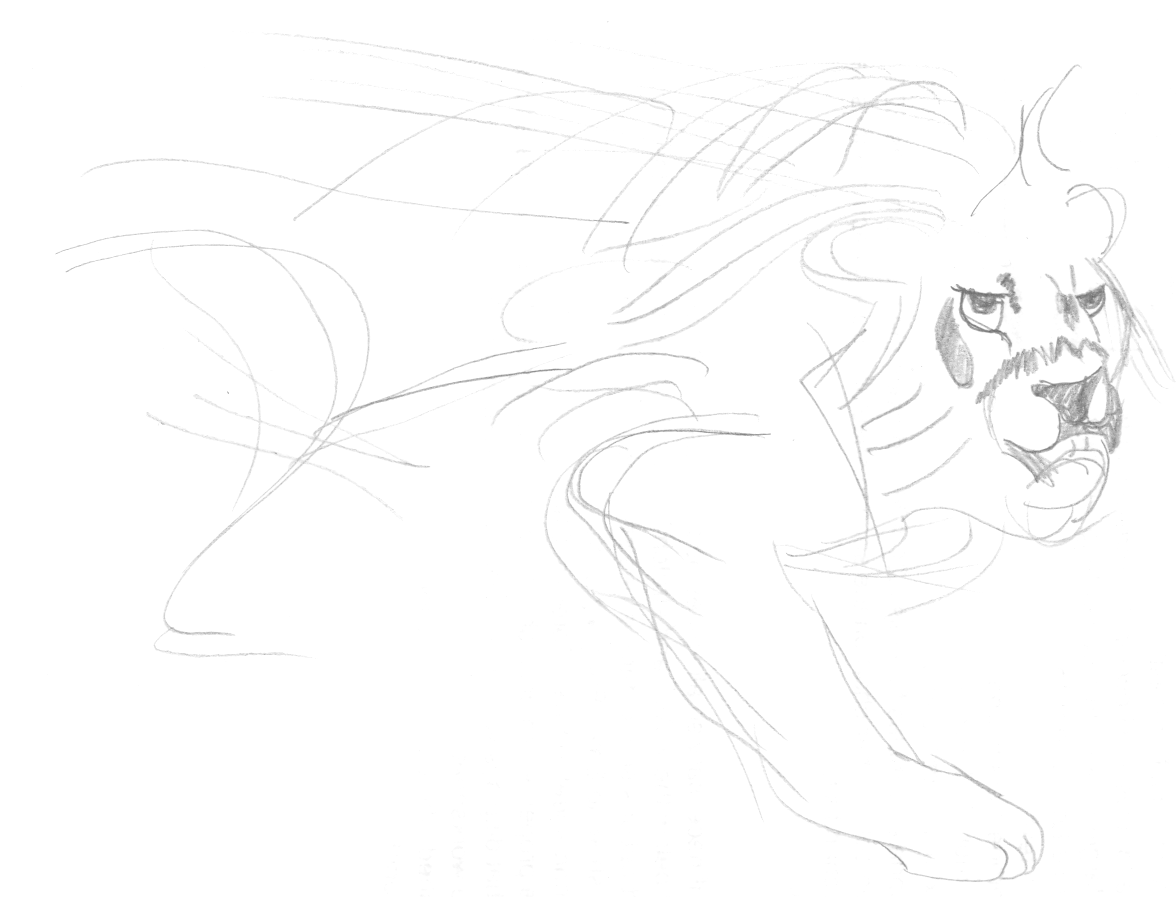
It’s a reasonable copy of the original. Here is my emulation of his style using a roe deer as my subject:
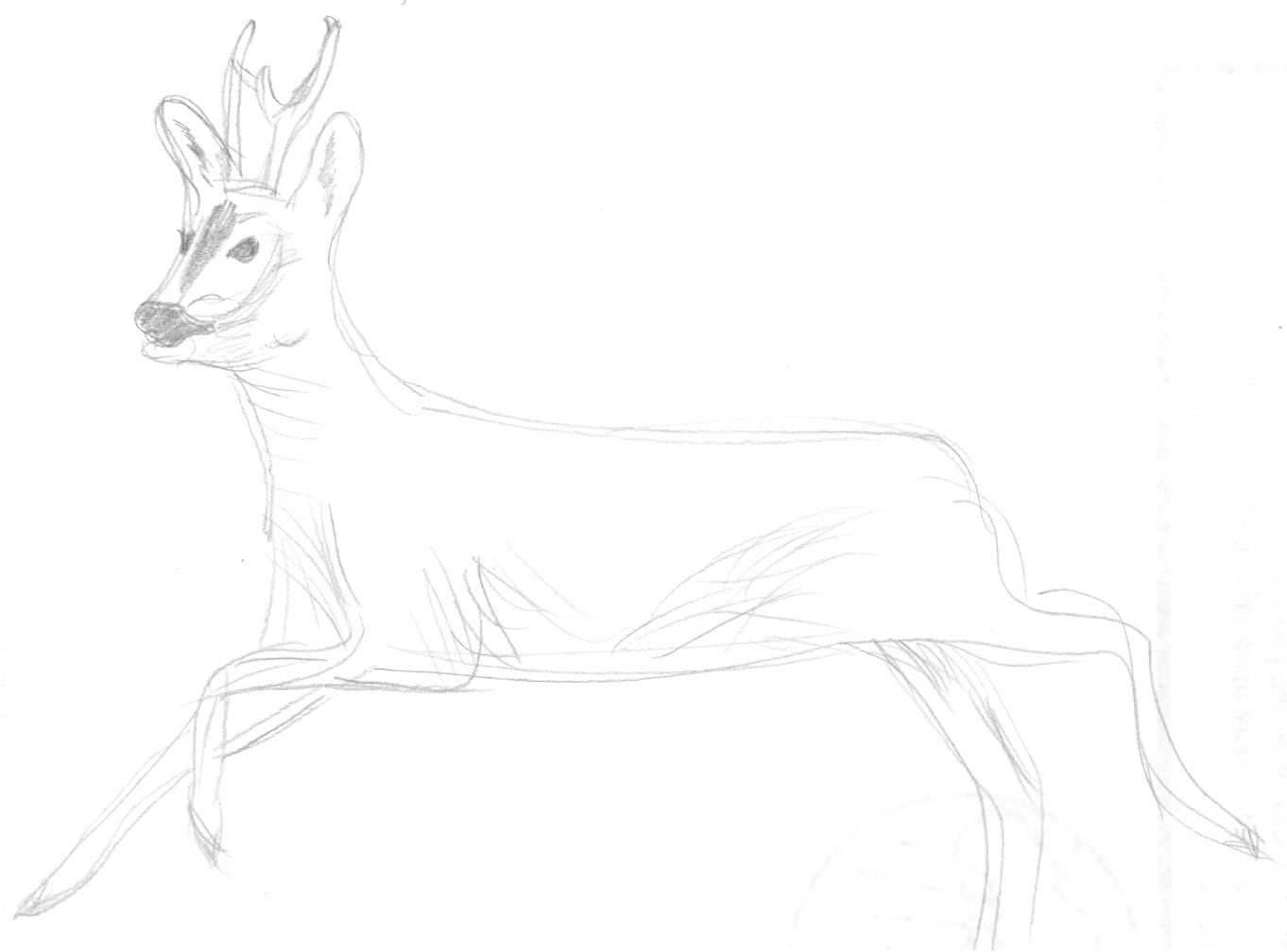
I think mine isn’t as free-form as Delacroix’s, but I succeeded in drawing a lot sketchier than usual. It felt empowering. 
Tags: drawing, Keys to Drawing, perfection
Permalink
Monday, 31 Dec 2007 at 11:42 am
Keys to Drawing has a very Zen lesson about the difference between seeing and knowing:
Seeing comes first. When rules conflict with seeing, forget them and draw what you see. This is what is meant by retaining an “innocent vision.” That is, to look at something as if you have never seen it before, and to be unclouded by assumptions about how a thing is supposed to look. The one simple rule to follow is: at each point of frustration or confusion, ask yourself, “What do I see?” (p. 17)
If you’ll excuse me for veering off the topic of drawing, this idea has been very important to me recently even though I didn’t think of it specifically as a conflict between knowing and seeing. One of the exercises illustrates the conflict. I first drew a green pepper from memory:
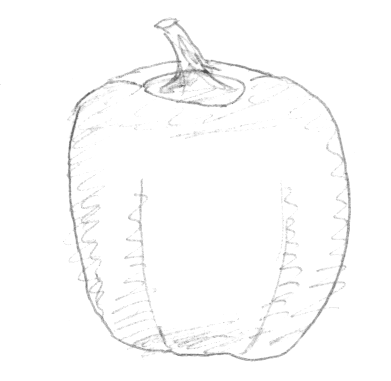
Then I drew a green pepper while looking at one (actually half of one) that I had available:
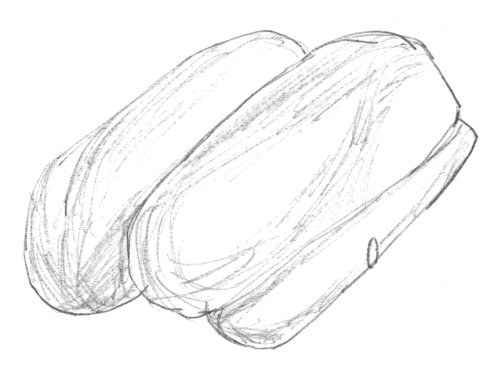
Our memories are only symbols. We walk around with preconceived notions that contain only a fraction of the information available in our first-hand experiences. Our memories are not our experiences. They are only derivative and shallow. Those prejudices based on memories get in the way of drawing because they separate us from what something really looks like. It is important to be able to suspend what we think we know in order to see clearly.
When I read this in the book, I immediately thought of my deconversion from Mormonism and theism. That process was driven in part by looking at my experiences with innocent eyes.
Anyway, back to drawing. This drawing is of my hand. The book said that if my drawing actually looked like a hand that I hadn’t done it right. Mission accomplished:
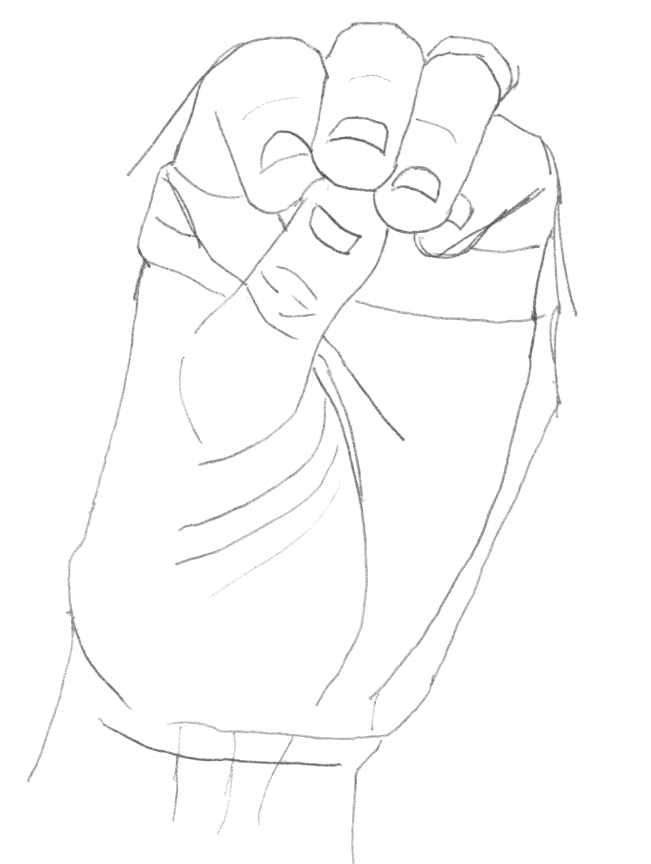
Then we have my eyes, or a crude approximation thereof. I really want to be able to draw human beings, but I have a long way to go:
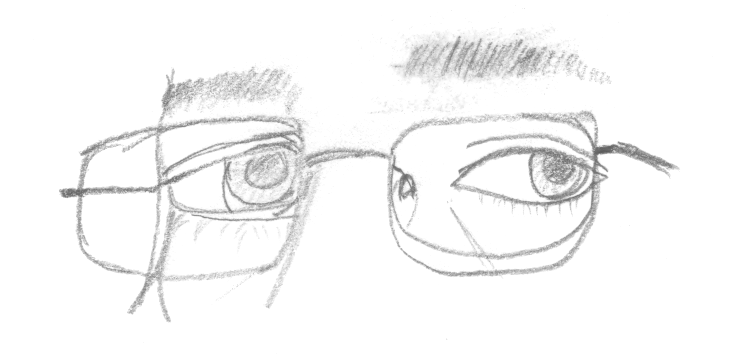
A bottle laying on the table:
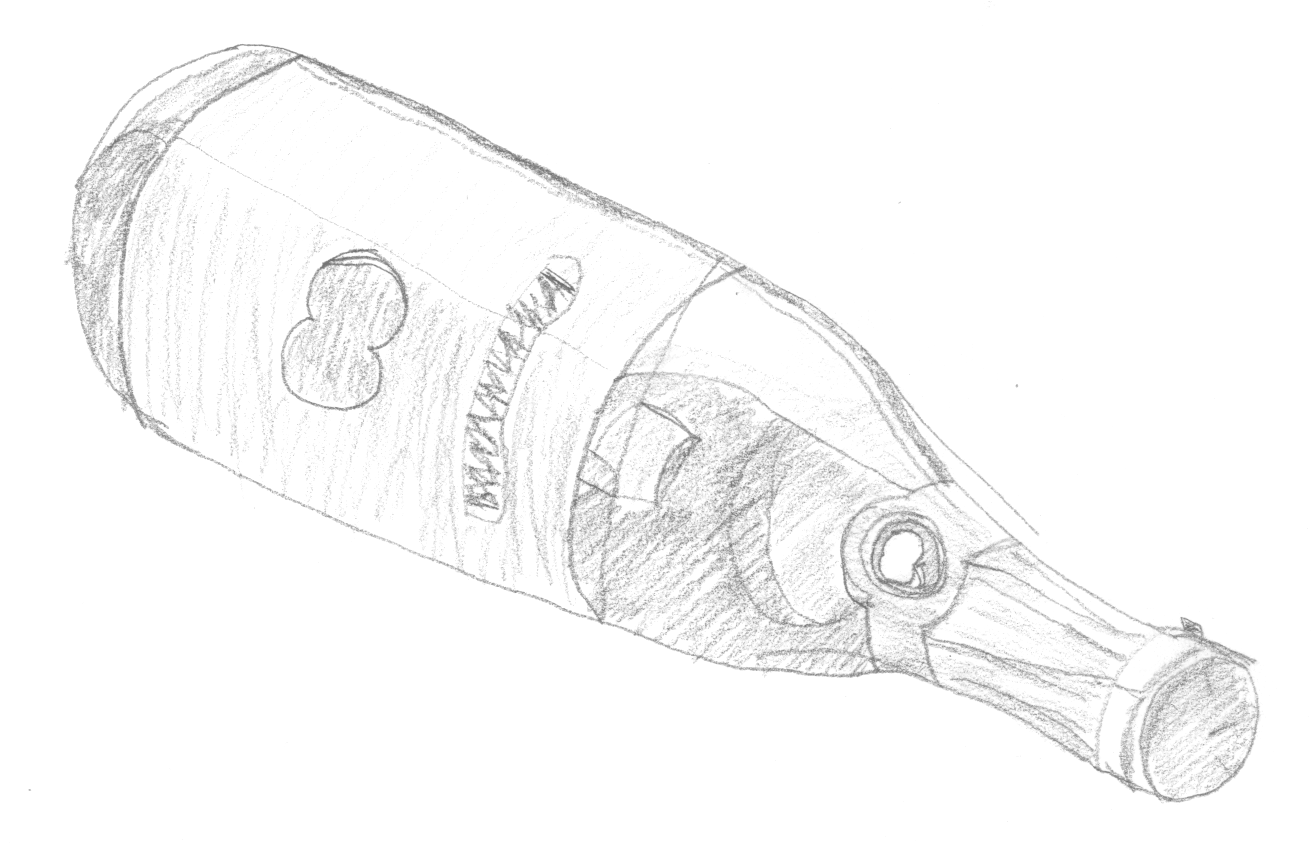
And an exercise bike:
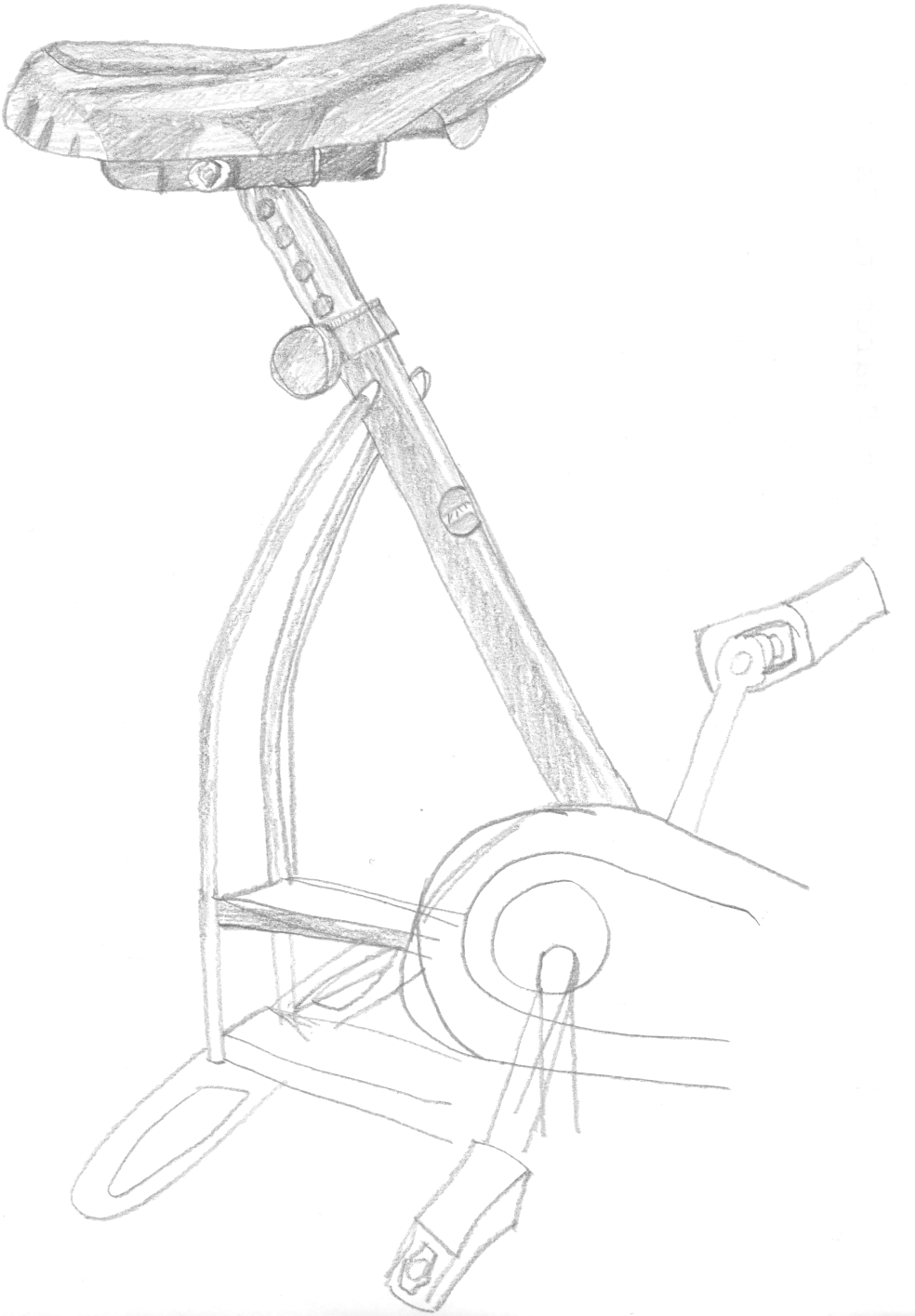
Tags: art, drawing, Keys to Drawing, knowledge, zen
Permalink
Friday, 28 Dec 2007 at 11:57 am
Todd was my third-grade arch nemesis. For some unaccountable reason, all the girls in my class seemed to like him, including Jamie Conway, that dark-haired vixen with the black-magic voice that haunted me for years. Todd was taller, better looking, and probably smarter than I was, and he could draw. While I was overjoyed to learn to draw realistic cubes, he could draw believable dinosaurs, an infinitely sexier subject. He drew her attention away from me, and I cursed him for it.
For years I’ve wished that I could draw realistic pictures—perhaps to prove that Todd wasn’t that special after all. I’ve doodled. Sometimes I’m surprised by how well my doodles turn out. Most of the time, I hide them from critical eyes. I hate doing things that I’m not good at, being vulnerable in that way. When I realized how driven by fear I had become, I started to intentionally put myself in situations where I would probably make a fool of myself.
Today is a continuation of that quest to face up to my silly fears. My wife gave me Keys to Drawing for Christmas. I plan to post my drawings here to 1) allow myself to look foolish, 2) use your peer pressure to keep me going, and 3) chronicle my progress (I hope).
The first exercise was to draw my crossed feet using a simple line drawing with no erasing and redrawing lines where necessary. The key was to spend more time observing my feet than being critical of my drawing. I think the author expected me to be wearing shoes, but I spend most of my time at home barefoot, so you get a 2-for-1 embarrassment deal: my amateur drawing and my feet in all their long-toed, short-footed, hairy, knobby glory:
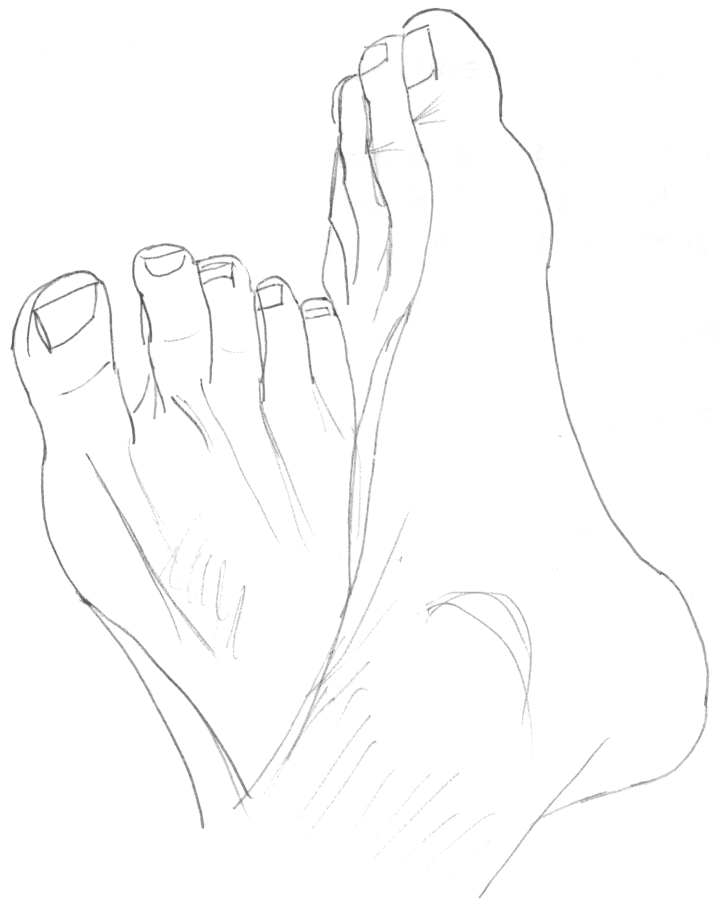
Tags: drawing, fear, Keys to Drawing, pride
Permalink
![]()








